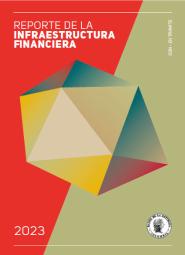Banco de la República Holds the Benchmark Interest Rate at 3.25%
At its meeting today, the Board of Directors of Banco de la República decided, by a majority, to hold the benchmark interest rate at 3.25%. The Board took that decision based on the following relevant aspects.
- Second-quarter economic growth in the advanced economies was slightly better than anticipated. However, expansion in many of the emerging economies of Asia and Latin America did not live up to expectations. The aggregate growth of Colombia's trading partners probably will be less than what it was in 2012. Something similar is expected for terms of trade, unless the recent upswing in oil prices continues for an extended period of time.
- The volatility in global financial markets has increased and is having a particular effect on several emerging economies. Expectations of less extensive monetary expansion in the United States sparked a considerable increase in interest rates on sovereign bonds, starting from very low levels. The currencies of the emerging economies have devaluated against the dollar, including the Colombian peso. This trend probably will continue and contribute to a better performance by the tradable sectors of the economy and, hence, to more balanced economic growth.
- In Colombia, the new figures on foreign trade and internal demand point to more GDP growth during the second quarter of 2013 than in the first. Household consumption and investment in civil works and buildings probably grew at a slightly higher rate. On the supply side, growth in mining, agriculture and trade accelerated, while industry contracted one again, although less so.
- Accordingly, the technical team kept its forecast for second-quarter growth within a range of 2.5% to 4.0%, with 3.4% being the most likely figure. For all of 2013, the range is still between 3.0% and 4.5%, with 4.0% being the most likely figure. Colombia’s economic growth is expected to climb over the course of the year to the extent that aggregate expenditures react to monetary policy actions taken earlier and to the programs the national government has been implementing. However, the downside risks to these projections have increased as of late.
- The growth rates for bank loans have stabilized at levels above nominal GDP growth. In real terms, interest rates on the different types of lending are below their historical averages (except in the case of credit cards). However, general financial conditions may have adjusted in response to the rise in the cost of external financing.
In July, the annual inflation rate (2.2%) was somewhat lower than the technical team had estimated, and the average for core inflation remained relatively stable at 2.5%. The average of inflation expectations held by analysts and those calculated on the basis of government bonds is similar to the inflation target of 3%.
In summary, the economic indicators and projections show a lower level of output that what can be generated with Colombia's installed capacity. The monetary and fiscal policy measures implemented so far are expected to help raise the output rate during the rest of the year. Inflation is low and inflation expectations are anchored in the long-term target (3%). Interest rates are still at levels that stimulate aggregate spending in the economy. Based on an assessment of the balance of risks and without ruling out the possibility of a reduction in the benchmark interest rate, the Board considered it appropriate to keep it at 3.25%.
The Board will continue to monitor carefully the performance and projections for economic activity and inflation in the country, asset markets and the international situation. Finally, the members reiterated that monetary policy will depend on new information as it becomes available.
Bogotá

















































